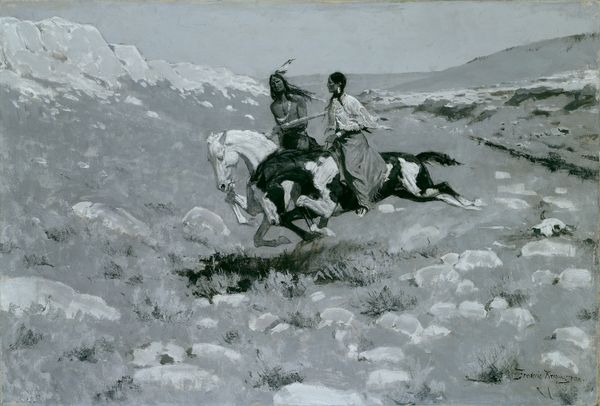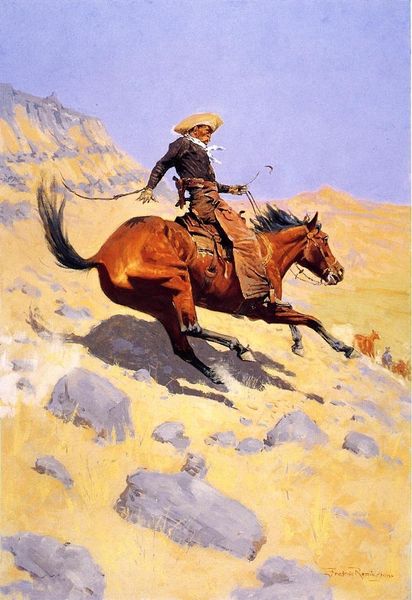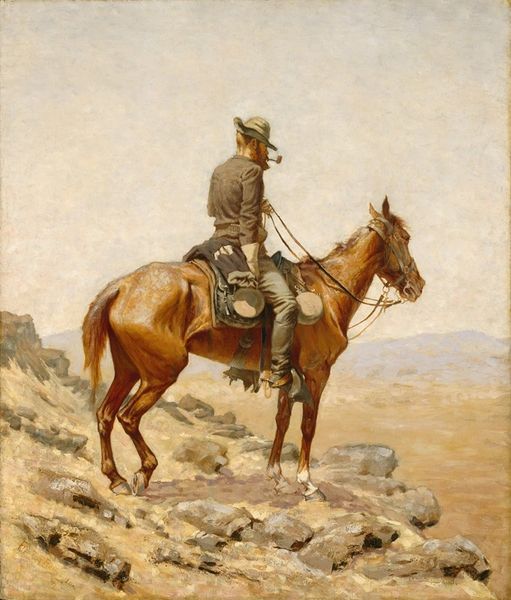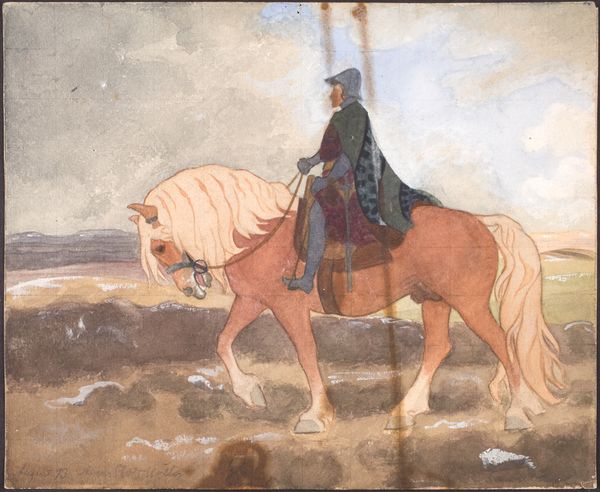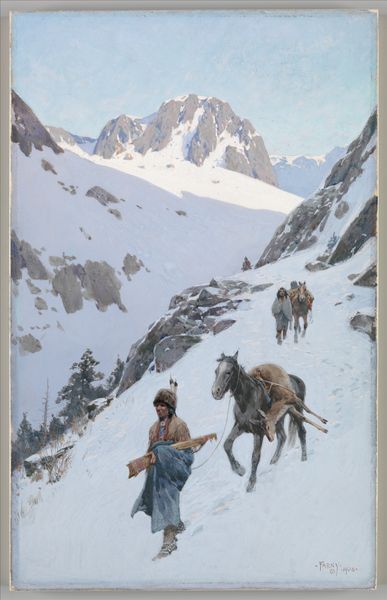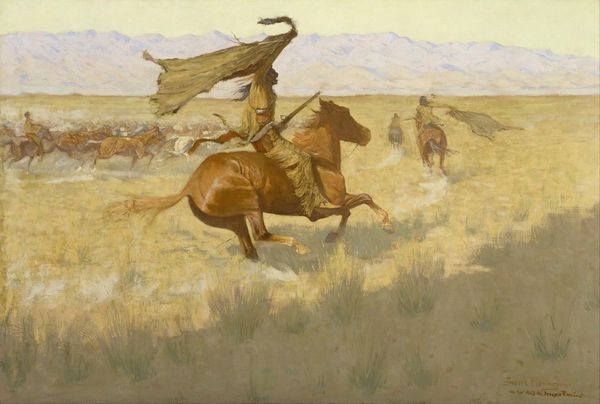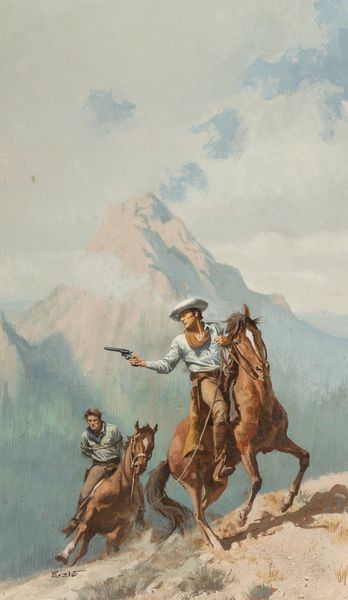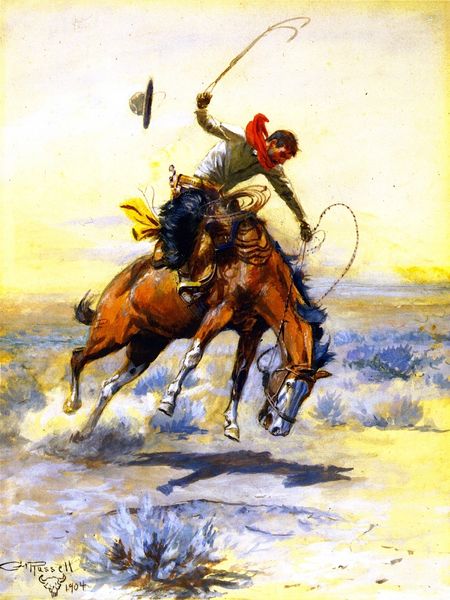
painting, oil-paint
#
narrative-art
#
painting
#
oil-paint
#
landscape
#
figuration
#
oil painting
#
orientalism
#
horse
#
men
#
history-painting
#
realism
Dimensions: 34 1/8 x 24 3/4in. (86.7 x 62.9cm) Framed: 39 3/8 x 29 15/16 x 2 3/4 in. (100 x 76 x 7 cm)
Copyright: Public Domain
Curator: Here we have "In Hot Pursuit," an oil on canvas crafted by Charles Schreyvogel sometime between 1901 and 1910. It currently resides here at the Metropolitan Museum of Art. Editor: My initial feeling is urgency. There's an almost theatrical intensity conveyed through the charging horse and the figure’s poised weapon. Curator: Schreyvogel was known for his paintings of the American West. He was part of a wave of artists captivated by the romantic allure, but his work also participated in shaping popular understanding of this era. The chase scene evokes the conflict narrative that dominates a lot of Western art from that period. Editor: I'm drawn to the symbolism of the horse itself. Across cultures, horses often represent power, freedom, and even a connection to the wild. This one seems to be an extension of the rider’s intent, embodying his forceful will. Notice the energy emanating from its taut muscles and flaring nostrils. Curator: Absolutely. And it's worth noting that Schreyvogel, though lauded in his time, has faced scrutiny. His depictions of Native Americans have been criticized for perpetuating stereotypes and biased perspectives on historical events. "In Hot Pursuit" presents the chase, but whose land is being fought over? Editor: It’s interesting how the snowy landscape contributes to this drama. White, in many traditions, signifies purity or a blank slate, yet here it's disrupted by the frantic pursuit. It almost serves as a stark backdrop to highlight the loss of innocence or the potential for violence. Look, even a smaller contingent of riders is visible in the distance. Curator: The artistic licensing to reconstruct events comes under fire when considering these images helped inform and solidify ideologies, often at the expense of the people depicted. The staging of events, what details are prioritized versus omitted all lend themselves to further mythologizing of this era. Editor: Examining art like this allows us to face our past more openly. We confront not only the thrilling adventure narrative but also the uncomfortable questions it raises about cultural biases and the lasting impact of visual symbols. Curator: Precisely, acknowledging the complexities is crucial when reevaluating artworks like “In Hot Pursuit” within a modern framework. Editor: Ultimately, art serves as a lens through which we understand our historical trajectory and reflect upon our societal narratives.
Comments
No comments
Be the first to comment and join the conversation on the ultimate creative platform.
